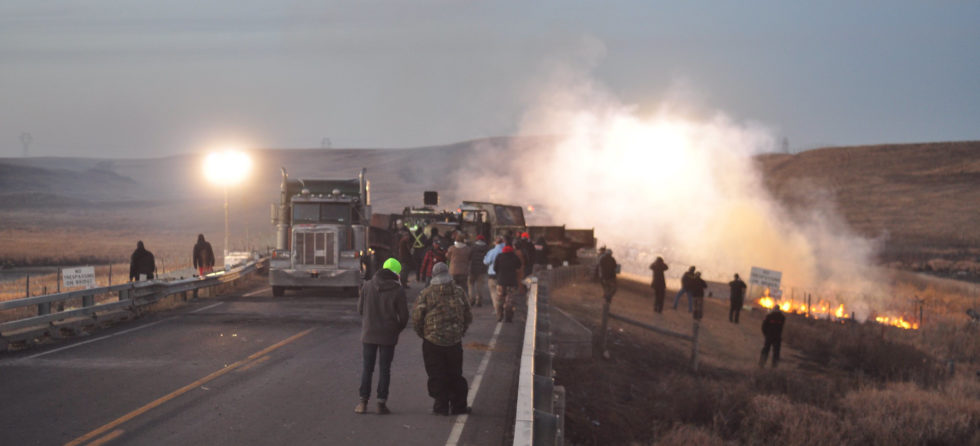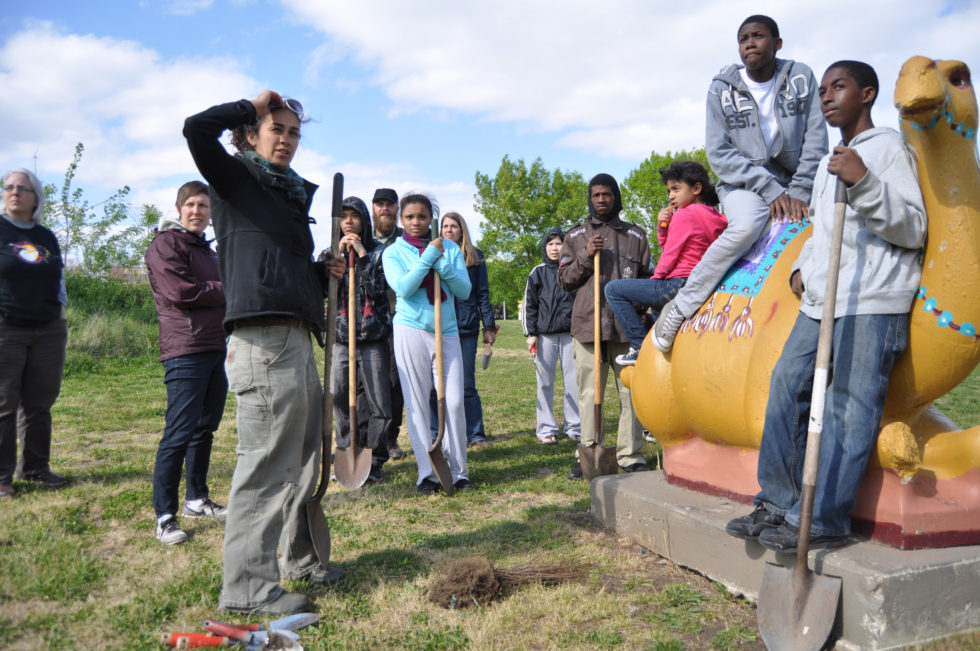
This article was originally published in the Fall 2024 issue of MennoMedia’s Leader Magazine. Illustration of George Blaurock generated using DALL-E by Tim Nafziger, August 26, 2024
As Mennonites and other Anabaptists prepare to celebrate the 500th anniversary of Anabaptism, we are marking the anniversary of January 21, 1525, when George Blaurock and Conrad Grebel gathered with others for a secret meeting in the house of Felix Manz in Zurich, Switzerland.
Earlier that day these reformers had lost a contentious theological debate in the city. Zurich city council had declared their meetings illegal and ordered them to baptize all their unbaptized children. Yet those gathered felt the bible was leading them differently: baptism should be an adult decision upon confession of faith. Blaurock turned to Grebel and asked him to baptize him. As the story goes, Grebel obliged and Blaurock became the first Anabaptist: twice baptized.
But this story is only one part of the Anabaptist origins. It is a story that has been told to intentionally minimize the stories of other radical reformers.
Mennonite Action and Vincent Harding
Before we tell the full origin story, let’s go 499 years forward to another January morning, this one in 2024. It’s January 16 and over a hundred Mennonites are walking through the Cannon House Office Building in Washington, D.C. This is part of the Capitol complex: “temple of our Democracy” according to house speaker Nancy Pelosi.
Those gathered are part of a group called Mennonite Action calling for a ceasefire in Gaza. On a pre-arranged signal, they all sit down. It is a creative disruption, like Jesus’ nonviolent direct action in the temple in Mark 11:11-19. Rather than pulling out a whip, the Anabaptists sit down and began singing hymns until they are arrested by Capitol police.
Mennonite Action is building on the work of groups like Pink Menno, Community Peacemaker Teams and On Earth Peace. These are Anabaptist-rooted groups who have gone beyond conscientious objection to actively working for justice and peace. They have often faced pushback from Mennonites who are more focused on personal holiness and traditional ideas of nonresistance.
(more…)
TimN
August 27, 2024
Anabaptism, Four Streams of Anabaptism Series, Mennonite Action, Nonviolence, Peace & Peacemaking, Politics, Power, Social movements
Read more >

This essay was originally published in Anabaptist World in July 2022 as Quilts and Power: What Malcolm Gladwell is missing about Mennonites
On June 22, author and speaker Malcolm Gladwell published an essay on his participation in a Mennonite wedding in the town where he grew up in southern Ontario. Gladwell opens the piece by summarizing his previous coverage of Mennonites and expressing his deep affection for our community.
Gladwell writes enthusiastically that Mennonites are a “low power distance” culture. Power distance is a term from sociology that refers to the extent to which people of low status accept unequal distribution of power. In other words, Gladwell is saying Mennonites are wary of hierarchy. He says we have abandoned “the aggressive pursuit of status markers.”
Resisting political domination and illegitimate authority are at the core of Anabaptism. However, Gladwell’s public relations campaign on our behalf is problematic. Here’s why: Mennonites do have status markers, they are just different (sometimes) from those of dominant culture in the U.S. and Canada. If you advertise Mennonites as having no status markers, you set up false expectations that will lead to disillusionment by people who start attending Mennonite churches. (more…)
TimN
August 27, 2023
Mennonite Church USA, Politics, Power, Privilege
Read more >

In understanding the storming of the capitol one year ago today I’d like to focus on the framework of the “armed flash mob,” a term used by scholar Darrell Miller that connects with concepts introduced to me by Bill Wasik, an article in Wired magazine 10 years ago. I’m also drawing on the 40 minute NY Times’ documentary Day of Rage: How Trump Supporters Took the U.S. Capitol (published June 30, 2021) that offers minute by minute analysis of January 6, 2021 drawn from thousands of primary sources including a lot of video from the rioters themselves.
I’ll look at each term in the phrase “armed flash mob” in detail in the context of that day.
Mob – Insurrectionist crowd dynamics
We’ll begin by understanding how the insurrectionists on January 6 functioned in ways familiar to scholars of mob behavior. One of the key moments in the storming of the capitol happened at 12:50 pm. “Day of Rage” covers this moment in detail starting at about 10:00 in the video. They emphasize the role of the Proud Boys leader Joe Biggs and his brief conversation with Ryan Samsel, a Trump supporter who was the first to approach the police and challenge them. While leaders like this played an important role, it is important to understand the broader context of the crowd dynamics (both in this moment and as things escalted) to violently attack police. (more…)
TimN
January 6, 2022
Journalism, Polarization, Police, Power, Social Media, Social movements, Technology, Violence
Read more >

This morning’s NY Times piece, “How It All Came Apart for Bernie Sanders” is a must read for every supporter of the Sanders campaign. It’s not a pleasant article, but learning from mistakes is critical collective work, even when it happens in a painful public way. While the focus of my political work has not been electoral campaigns, I think we have to recognize that the Bernie movement is inextricably tied to electoral politics. So it must, to some extent, submit to measuring itself by that framework, which is the focus on the NY Times piece. It must also grapple with a grasroots movement measuring stick as well given that the campaign claimed that mantle. Alexander Burns and Jonathan Martin do not speak that language and so I will try to do some extrapolation work from their journalism. (more…)
TimN
March 21, 2020
empire, Politics, Power, President
Read more >

This blog post was originally published on my blog for The Mennonite two years ago.
In his address to graduating students at Eastern Mennonite University (EMU) on May 2, President Loren Swartzendruber complained about social media. On May 2, the Daily News-Record quoted him:
“Here’s the challenge we face,” he said, “namely the question of how we engage in meaningful, life-changing, civil conversations in a world that’s impatient for quick answers … and is all-too ready to vilify those who disagree.”
He said important discussions “are extremely difficult to conduct via social media,” and require intra-personal relationships.
There’s plenty of reasons to be concerned about social media, but there’s a story and a pattern behind this complaint that needs a closer look. Swartzendruber’s critique comes after months of pressure on his administration around its handling of Luke Hartman’s employment at EMU. Social media played an important role in that pressure.
(more…)
TimN
August 23, 2018
Institutions, Mennonite Church USA, Power, sexual abuse, Social Media, Technology
Read more >

This post was originally published two years ago as MMMMs: Expanding our Churchly imagination in my blog for The Mennonite. Thanks to Hannah Heinzekehr for adding photos to illustrate this piece.
In the wake of this summer’s Mennonite Church USA convention and the pending departure of Lancaster Conference, I am reflecting on the role of “Moderate Mennonite Male Managers” (MMMM’s) in our institutions. This recent essay by John Rempel inspired me to look specifically at a blind spot common among the the “Moderate Mennonite Male Managers” (MMMM’s) of our institutions. For those of you who haven’t read it, this quote summarizes Rempel’s thesis well:
Each type of church brings different gifts to the table. Moderates bring the willingness and capacity for meaningful compromise. Liberals bring the capacity to live with ambiguity and with matters that are presently incapable of solution. Conservatives bring a deep trust in the Bible and the Holy Spirit as sources of clear positions in matters of faith and life.
I resonate with Rempel’s 1 Corinthians 12 inspired vision of the different gifts of the body of Christ that he outlines. However, Rempel’s paradigm, focused around liberals, moderates and conservatives, misses a whole swath of our community and Anabaptist tradition.
To understand more about this missing community, I turn to the model of four streams of Anabaptism that Rodney Sawatsky outlined in 1992. In summary, he traces four contemporary streams of Anabaptism back to our 15th century origins: Separationist, Establishment, Reformist and Transformationist. I will focus in this article on the transformationist, but you can see Sawatsky’s table with all four in my 2007 blog post. These streams do not map perfectly onto Rempel’s model of liberals, moderates and conservatives, but however you slice the cantaloupe, the transformationist stream is glaringly absent.
(more…)
TimN
October 27, 2017
Four Streams of Anabaptism Series, Group Identity, Institutions, Mennonite Church USA, Power, Privilege, Race, Sexismbureaucracy
Read more >
Editor’s Note: 10 years ago, we kicked off this blog. Over the coming months, we’ll be hosting a series of posts reflecting back on the last 10 years. Thanks to Tom Airey, co-editor of our sister blog, RadicalDiscipleship.net for this second post in this series. – Tim Nafziger

Caption: Tom (right) listening to Ched Myers during a conversation by a stream in California in 2011 with Elaine Enns in background.
by Tom Airey
When Young Anabaptist Radicals launched a decade ago, I was out West reading compelling scholarship from Walter Brueggemann, Brian McLaren, N.T. Wright, Marcus Borg and John Howard Yoder (WGWW: white guys with websites), moved by their mapping of a much needed “post-Evangelical” Christian terrain. I took their ideas at face value: meaning that I yearned to apply many of their convictions to my own ministry, marriage, church and vocation. But I frequently found myself day-dreaming about what these authors are like in real time. Of course, there’s always a gap between word and deed, but I was becoming more and more uncomfortable with my own SCS (Seminary Celebrity Sensationalism). We white male academics are the masters at hero-worshipping our favorite authors, pastors, scholars and philosophers. (more…)
TomA
October 6, 2016
10 Year Anniversary series, Anabaptism, Anabaptist Camp Followers, Mennonite Church USA, Power, Sexism, Social justice, Social movements, TheologyJohn Howard Yoder
Read more >

I wrote this piece on my blog for The Mennonite back in October 2012, but never got around to posting it here. I finished up my role of interim assistant director at Christian Peacemaker Teams 5 months ago and I have moved back to doing web site building. However I continue to ponder the themes in this post.
In September I accepted a position as interim assistant director with Christian Peacemaker Teams (CPT). This role comes as a bit of a surprise, for a number of reasons.
As regular readers of the blog know, I’ve been outreach coordinator with CPT for four years now and I’ve thrived in the role. I love meeting with new people and connecting them with CPT’s work. I like coming up with creative initiatives and following them through to their conclusion. I’ve walked with all our teams in the process of finding a new mission, vision and values (and soon, a new logo). I like working with changing teams of people to accomplish shared tasks together. But I’ve never been comfortable with the term “administrator,” or the “A word” as I like to think of it. I’ve always preferred “coordinator” or “organizer” to describe my work.
But then it happened. I was sitting with Rod Stafford, long-time pastor at Portland Mennonite. We were talking through logistics of their church hosting Peace, Pies and Prophets in January. “There aren’t many peacemaker administrators out there.” he said, “I wish there were more.” And then the conversation went on.
(more…)
TimN
January 14, 2015
Administration, Institutions, Power
Read more >

In the new issue of Mennonite Quarterly Review, five essays look at John Howard Yoder’s systematic project of sexual harassment and abuse of women. Unless otherwise noted, the articles named below are part of the issue.
Rachel Waltner Goossen’s essay “‘Defanging the Beast’: Mennonite Responses to John Howard Yoder’s Sexual Abuse” is the most extensive of these pieces. It is the result of an in-depth year-long study using previously inaccessible files. Her piece makes clearer then ever institutional complicity with Yoder’s abuse, starting in the late 1970s through the four year attempt to rehabilitate him that ended in 1996:
“As Marlin Miller and other Mennonite leaders learned of Yoder’s behavior, the tendency to protect institutional interests–rather than seeking redress for women reporting sexual violation–was amplified because of Yoder’s status as the foremost Mennonite theologian and because he conceptualized his behavior as an experimental form of sexual ethics.”
I’ve argued previously that this complicity continued up through the summer of 2013. At the time I asked “How do we develop a theology of power that give us ears to hear the voices of those marginalized and eyes to see the way we participate in their marginalization?”
(more…)
TimN
January 5, 2015
Institutions, Mennonite Church USA, Power, Sexism, Uncategorized
Read more >

In a May 2014 letter in The Mennonite, C. Norman Kraus asked whether the role of Mennonite Church USA Executive Director (ED) and has begun to look like a "new papal office." He said, "…are we not loading an institutional position with official authority that our polity does not accommodate?"
By bringing the pope into it, Kraus is drawing attention to some important questions about how the ED functions. Stay with me as we take a journey through the crufty corners of Mennonite bureaucracy and bylaws. It’s hard slogging, but it matters.
The response from Executive Board and Executive Director
Elizabeth Soto Albrecht and Ed Diller, current MC USA moderator and a former moderator of the EB respectively, responded to Kraus in an August 2014 letter to the editor in which they stated that "…there is no papal office in Mennonite Church USA.". They went on to defend the current role of ED with this mandate from the bylaws: "an Executive Director as a primary administrative officer who shall be its principal agent in the management of Mennonite Church USA."
Managing Mennonite Church USA… sounds pretty dramatic, eh? They left out the next point, which makes the organizational scope of the role sound a bit less grandiose: "The Executive Director shall conduct the administrative affairs of the Executive Board, serve as an officer, and supervise employees of Mennonite Church USA." The Mennonite Church USA being managed is an organization with a staff of 25 people, not the 90,000+ members of the denomination.
(more…)
TimN
October 8, 2014
Change, Mennonite Church USA, Politics, Pope, Power
Read more >
“The Spirit of the Lord is upon me, because he has anointed me to bring good news to the poor. He has sent me to proclaim release to the captives and recovery of sight to the blind, to let the oppressed go free, to proclaim the year of the Lord’s favor.” Luke 4:18-19
“…the hands of none of us are clean if we bend not our energies to righting these great wrongs.” W.E.B. DuBois
I traveled to Ferguson, MO from August 21-24 along with two other community organizers from New Orleans, LA. We visited the Canfield Green apartments where 18 year old Michael Brown was shot and killed by a police officer and where beautiful memorials had been created. One sign referenced the story of Cain and Abel in Genesis 4: 8-10 — “And the Lord says: ‘What have you done? The voice of your brother’s blood cries out.” And indeed, roses lined the street where traces of Michael’s blood were still evident, crying out for those with ears to hear.
We talked with Ferguson residents, including a group camped out in a parking lot across from the police station and some youth camped in the “approved assembly area” in the parking lot of an old car dealership. Both of these groups said they planned to stay until Darren Wilson, the police officer who killed Michael Brown was indicted, and we brought them water and ice and fruit as a way of expressing our support and appreciation for their persistent call for justice.
That evening, we saw how W. Florissant Avenue was closed to all thru traffic beginning at its intersection with Chambers Road, a full mile away from the “approved assembly area.” Anyone who wanted to join the protest had to walk a mile just to get to the protest site and then march in a spot cut off from the rest of the public, where police imposed a “5 second rule” which required protesters to keep moving, breaking up any conversations among groups of protesters who began to gather together.
This was only the most recent attempt to contain and squash people’s cries for justice. Others who had been in Ferguson earlier reported even more intense police repression. Police shot tear gas and rubber bullets at unarmed people who were in places they had every right to be including their own backyards, driveways and doorways. Purvi Shah of the Center for Constitutional Rights was part of a multigenerational crowd –including a number of children– into which police fired tear gas, with no warning and a full three hours before the midnight curfew that had recently been established. Many first person stories of encounters with police oppression are available if you look for them. What we saw in Ferguson was a community under occupation by police. No one felt safer. The constant threat of violence by police toward protestors was palpable.
(more…)
PamN
August 30, 2014
antiracism, Current Events, empire, Nonviolence, Peace & Peacemaking, Police, Police Brutality, Power, Race, Social justice, Social movements, Violence, Young Folksantiracism, empire, Nonviolence, Peace & Peacemaking, Police Brutality, Power, Race, Social movements, Violence
Read more >
Today a friend shared his experience when he was a young white teenager hanging out with young Latino men. When there was a possibility of encountering the police, they would say, “act white” and my friend would be asked to do the talking. What does “acting white” look like? If you’re asking that question, you’re probably white. For people of color in the United States there is often a “constant background processing” to empathize with white people around them and deal with their stereotypes. Strategies may range from dressing impeccably to whistling Vivaldi.
This week I’m preparing for a panel with Mennonerds on Race, Mutuality and Anabaptist Community. This blog post is a brief look at some of the themes I’m hoping we can discuss as practices for white people developing lenses to see differently through listening with humility.
Let’s start with changing lenses as Jesus talked about in this classic Sunday school passage, Matthew 18:1-5:
At that time the disciples came to Jesus and asked, “Who, then, is the greatest in the kingdom of heaven?” He called a little child to him, and placed the child among them. And he said: “Truly I tell you, unless you change and become like little children, you will never enter the kingdom of heaven. Therefore, whoever takes the lowly position of this child is the greatest in the kingdom of heaven. And whoever welcomes one such child in my name welcomes me.” (NIV)
Immediately in my mind’s eye I see this image or one of a thousand like it:

(more…)
TimN
June 11, 2014
Power, Privilege, Race
Read more >
MENNONITE CHURCH USA CHURCHWIDE STATEMENT ON LGBTQ COMMUNITIES, DIVERSITY, POWER, OPPRESSION &Â PRIVILEGE*
Introduction
Mennonite Church USA has roots in seventeenth-century churches planted by what today we might call “radicals” and “social justice activists” from Europe. Our church continues to grow and be enlivened by people who join us from many countries, backgrounds, races, genders, sexual orientations, abilities, as well as other diversities and differences. As Christians, we believe we are called to welcome these seekers of church community in our congregations and communities, especially as our government fails to serve all but a privileged few, with harsh laws frequently punishing difference. Assumptions about identity make some people more vulnerable to political biases and discrimination than others. Our concerns about the status of peace and justice in this country and in this world relate to how people are treated based on race, nationality, ethnicity, gender, sexual orientation, class, ability status, citizen status, religious identity as well as other statuses.
We reject our country’s mistreatment of people, repent of our silence, and commit ourselves to act with and on behalf of all our community members regardless of any status. (more…)
JenniferY
February 17, 2014
activism, antiracism, Current Events, disabilities, Ethics, Exclusion, Faith, Gender, Group Identity, Immigration, Indigenous, Leadership, LGBTQ, Love, Mennonite Church USA, Nonviolence, Peace & Peacemaking, Power, Privilege, Race, Sex, Tactics, Violencebisexual, gay, Inclusion, lesbian, LGBTQ, MC USA, MC USA Executive Board, Mennonite, queer, Statement, transgender
Read more >
I recently wrote about Romans 13 and the state. I mentioned that I did not believe that text was even about the Roman government. I believe, based upon the evidence I have seen, that Romans 13 talks about reconciling Jewish and Gentile Christians in relation to the religious, community authorities. Tyler Tully picked up on this and wrote a far more detailed analysis of this here and here, which I strongly recommend reading.
Today, another questionable text in regards to the New Testament and the state has been brought up, this time from Peter instead of Paul:
Be subject for the Lord’s sake to every human institution, whether it be to the emperor as supreme, or to governors as sent by him to punish those who do evil and to praise those who do good. For this is the will of God, that by doing good you should put to silence the ignorance of foolish people. Live as people who are free, not using your freedom as a cover-up for evil, but living as servants of God. Honor everyone. Love the brotherhood. Fear God. Honor the emperor. (1 Peter 2:13-17 ESV)
This passage is a bit different than Romans 13. Unlike Romans 13, this passage is pretty straightforward. Romans talks about vague authorities, the sword, and taxes, and it is surrounded by teachings on religious instruction and ethics. Simply put, Romans requires a lot of unpacking in addition to looking at possible translation errors. On the other hand, this passage from 1 Peter is pretty much independent, and any issues in our reading of the text would primarily originate from possible translation errors. (more…)
KevinD
February 12, 2014
Anabaptism, empire, Interpretation, neo-Anabaptism, patriotism, Politics, Power, President, The Bible1 Peter, empire, Jesus, kingdom, Peter, Romans 13, the state
Read more >
You can read Response by Ervin Stutzman here, if you missed it.
Several days ago I noticed a flurry of activity — a letter signed by 150 pastors calling for welcome of LGBTQ folks, the Executive Director of Mennonite Church USA in response “earnestly desir[ing] that our church be faithful to scripture and God’s call,” articles about these developments, and comment section dust-ups. It seemed appropriate for me to acknowledge this flurry on behalf of my queer Mennonite self, and to make an initial response to the hopes and Menno-speak voiced within that flurry.
First of all, I receive the letter from the pastors as an example of allies (and I believe, a member or two of the LGBTQ community!) in positions of power and with legitimizing credentials standing in the gap for queer folks like myself whose voices are nearly always marginalized in any discussion about our lives and spirits in the Mennonite Church. I receive Ervin’s response as difficult to decipher Menno-speak backed by his authority as Executive Director, and positioned as (perceived) gatekeeper to the Mennonite Church.
Partly as a result of this (perceived) gatekeeper role, Ervin believes the 150 pastors’ beliefs and experiences are his and the board’s to judge and deem worthy of rightness or wrongness. Stutzman declares that he “lament[s] that the individuals and groups at opposite ends of the spectrum of concerns related to sexual identity and orientation are no longer willing to be in patient forbearance with each other.” He sat at the table with members of the LGBTQ community (or as he calls it, people on the LGBTQ spectrum), and believes that his recounting — from a position of power and authority — of these conversations with folks accurately represents LGBTQ and allied experiences in the Mennonite Church, and he bases his conclusion on that belief. His conclusion is that “even among the closest family members of individuals with LGBTQ identity there is no consensus on the moral and theological implications.” I am assuming he means the moral and theological implications of being a member of the LGBTQ community, but the sentence is unclear.
Secondly, I receive the letter from the pastors as a plea to the church to find a better way of addressing our differences. I receive the letter from Ervin as a plea for members of the LGBTQ community to continue bearing the brunt of hatred, of silent treatment, of being ignored, passed over, and mistreated while members of our community stand by, and to be patient all the while. I also receive it as a plea for those who have a deeply held, unmovable, unchangeable belief that acceptance of members of the LGBTQ community is a sign of the spiritual downfall of the church to sit back down in the pews, and forebear.
(more…)
JenniferY
February 6, 2014
LGBTQ, Mennonite Church USA, Poetry, Power, Privilege, Social justiceErvin Stutzman
Read more >










